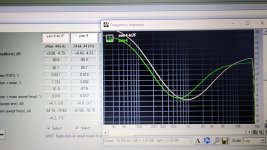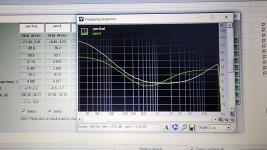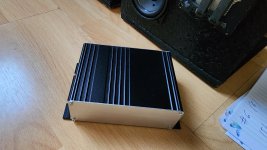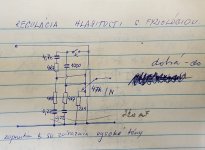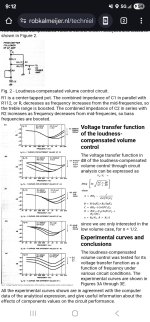Off topic back to post 18 and 37 - this looked like a genuine Philips schematic, but if it is a book excerpt please let us know ..
It's a copy from a Dutch electronics hobbyist magazine called Radio Electronica from the 1950's:
L. V. Viddeleer, "Toonregeling", Radio Electronica October 1953 pages 29...32 and 64 and November 1953, pages 19...22 and 38.
The figure I copied is from page 30 of the October issue.
L. V. Viddeleer, "Toonregeling", Radio Electronica October 1953 pages 29...32 and 64 and November 1953, pages 19...22 and 38.
The figure I copied is from page 30 of the October issue.
Long story short, i optimized bottom part of yamaha loudness circuit. 15k resistor parallel was no go, 390nF cap parallel was go, moving bass shape to my liking. Ended up with just 1nF instead of 8.2nF. Nice sharp highs increase. I think i will stop here and box it. Even found nice aluminum case.
Attachments
Off topic back to post 18 and 37 - this looked like a genuine Philips schematic, but if it is a book excerpt please let us know ..
For completeness: Viddeleer later (in 1954) published a complete amplifier design with an extended version of his tone control and I just saw one in the Nationaal Grammofoonmuseum in Nieuwleusen, the Netherlands.
Great news friends. I located my old notes from commies czechoslovakia and here is complete and very best approximation of loudness curves volume pot 47k ohm with three taps.
Offcourse loudness not independent of volume has serious drawback, because if you use higher of lower sensitivity speakers, different amount of loudness is applied to different speakers at the same spl. Thats main reason it was abandoned. But made as separate from volume control, it fully makes sense. Offcourse curves must be as close as possible to real loudness curves, not baxandal.
So i will built this, measure its behaviour and modify if needed. I may start another thread, i already messed up this one enough.
Offcourse loudness not independent of volume has serious drawback, because if you use higher of lower sensitivity speakers, different amount of loudness is applied to different speakers at the same spl. Thats main reason it was abandoned. But made as separate from volume control, it fully makes sense. Offcourse curves must be as close as possible to real loudness curves, not baxandal.
So i will built this, measure its behaviour and modify if needed. I may start another thread, i already messed up this one enough.
Attachments
I had a book by Viddeleer in which he described some of his designs, and the 'best' one was a circlotron with 2 x EL34. That was the very first amplifier I build, with 2 x 807 tubes. I think I gifted the book to Peter van Willenswaard, Mr. Audiomagic.For completeness: Viddeleer later (in 1954) published a complete amplifier design with an extended version of his tone control and I just saw one in the Nationaal Grammofoonmuseum in Nieuwleusen, the Netherlands.
View attachment 1464401
Jan
- Home
- Design & Build
- Electronic Design
- Easy Passive Circuits
